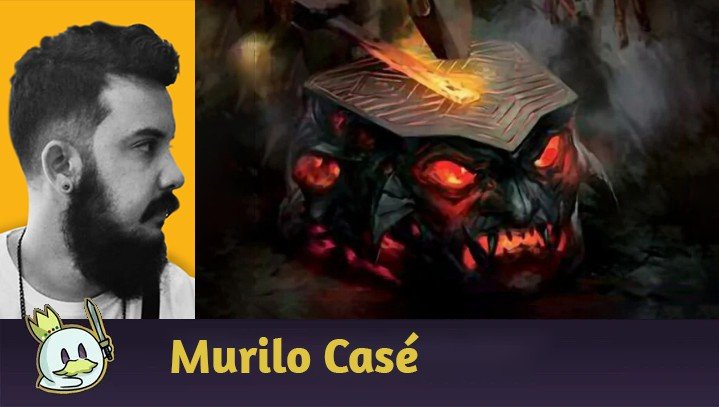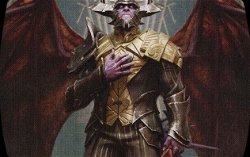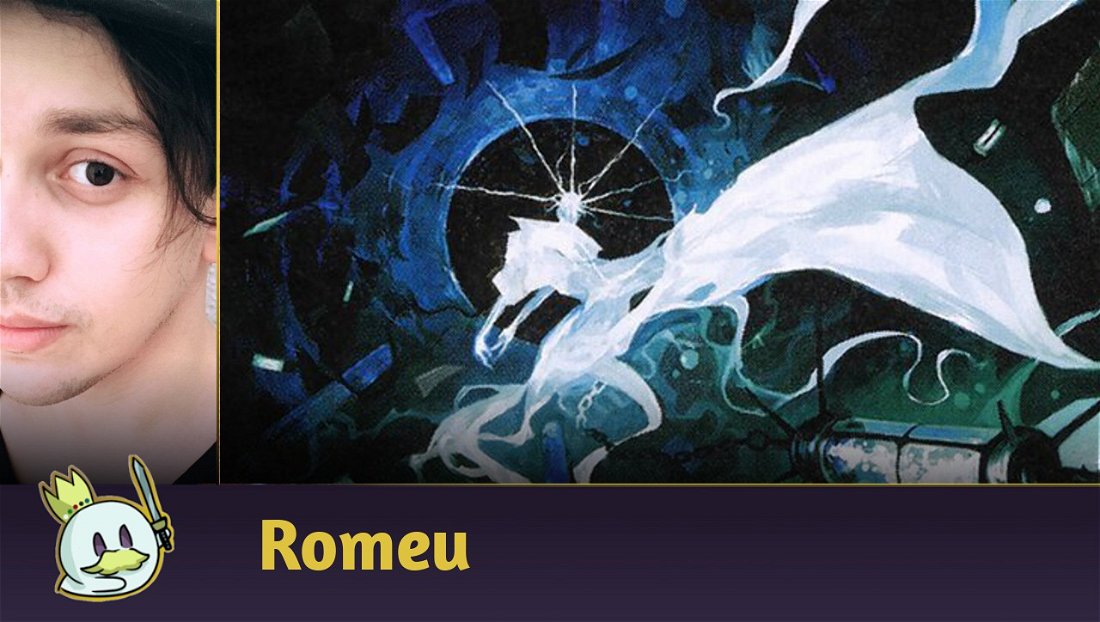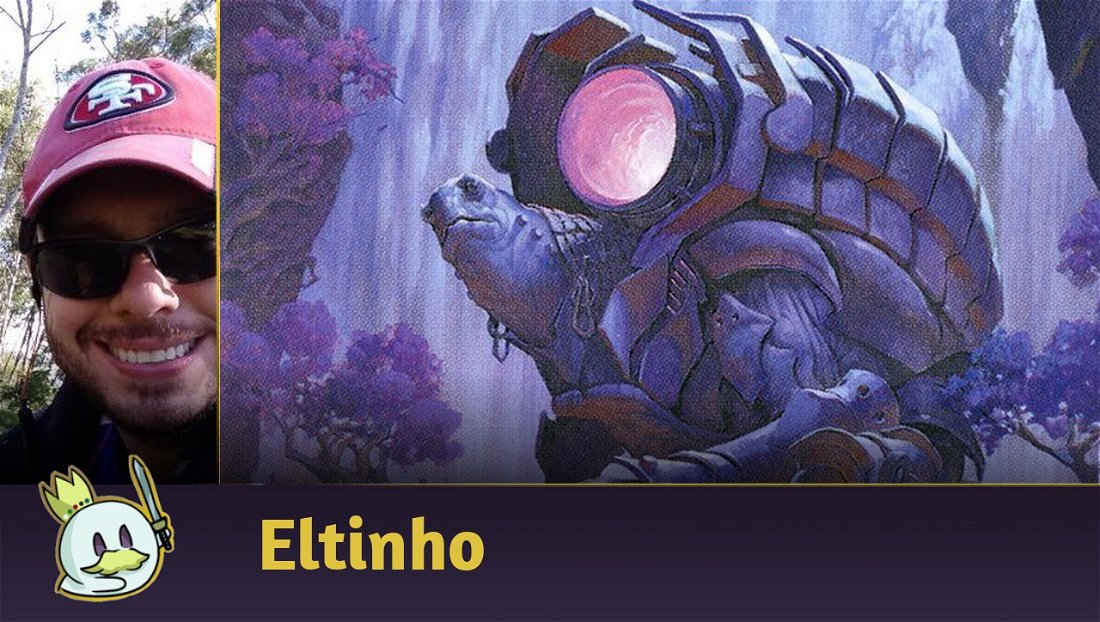I mentioned Jund Midrange (
, and I will introduce this deck that is extremely resilient, and one of my favorite Magic archetypes: Rakdos Sacrifice.
About the Deck
Our Rakdos seeks to undermine the opponents' life total little by little and can be considered a Midrange, as it can be aggressive at times. It is currently doing especially well against Aggro, and with this archetype's apparent rapid growth in the Metagame, I believe Rakdos is a good deck to take them on.
The opponents that will give more work are the Controls, like Grixis Vampires, as they manage to gain more card advantage than Rakdos and turn the game positively for them, making it difficult to win with only small creatures.
Here's our list:
In general terms, our deck works by draining the life of opponents gradually, while preventing big plays, especially large creatures that, when they manage to attack, will make our lives very difficult. The good news is that we have some removals for these moments.
The highlight is Oni-Cult Anvil. This artifact interacts with many cards in that deck, such as the blood tokens created by Bloodtithe Harvester or Voldaren Epicure, as well as Virus Beetle and Experimental Synthesizer, and so some lists also use the name Rakdos Anvil or Rakdos Artifacts.

Because it's pretty much the heart of the deck, we must find Anvil as soon as possible, so we can start extracting value from it, and cards like Experimental Synthesizer or Deadly Dispute will help us get card advantage. We will also have blood tokens to “recycle” cards from our hand, finding important pieces faster.
There are lists that don't run Abrade, in which case they play 4 copies of Ray of Enfeeblement and 4 Feed the Swarm. Analyze your Metagame to see if it's interesting to switch — I chose to keep Abrade because there are decks that run Valkmira, Protector's Shield or Reidane, God of the Worthy, and this card simply turns off Rakdos, so having at least 2 copies of Abrade became interesting in these cases.
Mulligan and Postures
Despite being almost an Aggro deck, we have to play calmly to extract more advantages from the deck, for example, not using Experimental Synthesizer on the first turn because we lost a card that way, and without affect the board in no way. The Synthesizer should ideally be used from turn 3 onwards, and usually before playing lands.

We must also be aware of the number of removals we have. In some cases, we will have to use Bloodtithe Harvester as removal instead of using it to attack or block, and we must also remember to do this and only then use blood tokens, this way we will be able to generate even more value.
Mulligans
Hands with only removals or only Planeswalkers should be a mulligan, in general, we should keep hands with a Swamp and a Mountain, or equivalent, and at least one Bloodtithe Harvester or Experimental Synthesizer, so the rest of the hand can be quite variable, as we will have at least one card to "recycle" our hand, or generate card advantage, in the case of Synthesizer.
The ideal hand might look like this:

Sideboard Guide
Mono Green Aggro
Mono Green is a consistently aggressive deck, so we have to get rid of its big threats as soon as possible. For that, we have Infernal Grasp, Hagra Mauling, Voltage Surge and in the later turns The Meathook Massacre as a sweeper.
While we're removing the biggest threats with these cards, we'll also have to deal with some smaller ones, so we'll be using Bloodtithe Harvester a lot, either to block or with its ability. Meanwhile, Anvil will be doing its job gaining valuable life and offering blockers, until we can use Sorin the Mirthless and Lolth, Spider Queen to spawn tokens.
Side Out

Side In

Boros Aggro
Against Boros we have a powerful card on our side, Ray of Enfeeblement, which will be important because our opponents in general run Thalia, Guardian of Thraben to delay our removals, and we will remove it more easily with Ray, as well as several other strong white creatures, such as Luminarch Aspirant, which should also be dealt with as soon as we have the opportunity.
Here the game will be very similar to against other Aggro, we will control the game while using Anvil to recover life. Post-Side, we add more removals in the deck, with the emphasis on the Ray of Enfeeblement.
Side Out

Side In

Naya Enchantments
This deck has a great emphasis on Auras, as we have numerous removals this can be one of the best matchups for Rakdos, as Naya depends on creatures to be enchanted and get big to the point of being threats. W must be cautious with Kami of Transience, who can come back from the graveyard, so we will also put graveyard hate post-side.
Side Out

Side In

Grixis Vampires
Grixis Vampires is a deck that tends to be very difficult for us, as it has an important card advantage with Evelyn, the Covetous and Kaito Shizuki, so it is essential to try to remove them when possible, while the other threats we can try to trade in combat.
In Games 2 and 3, we will try to get rid of the opponent's enchantment/artifact removal with Duress, thus allowing greater use of Anvil to guarantee our victory.
Side Out

Side In

Esper Midrange
Perhaps our worst matchup. Although we have Ray of Enfeeblement in side games to help us, this matchup tends to be better for Esper as the game extends.
With Esper having large creatures and card advantage, Rakdos will have a lot of work to do to turn the tables in their favor. Here, we will use Duress to remove planeswalkers, which can generate very high value for our opponent.
Side Out

Side In

Jeskai Control
This is a challenging matchup, but not exactly the worst for Rakdos. We need to play more carefully to avoid counterspells like Spell Pierce, Jwari Disruption and Make Disappear, which are avoidable by paying the extra cost. We must also be careful not to have our Anvil countered, and we must remove Goldspan Dragon and Hinata as soon as possible, as they are Jeskai's winconditions
Here we will use Duress to remove Prismari Command, Negate or cards that generate more value, like Reckoner Bankbuster or Expressive Iteration, so we can deny their resources on late game. We also sided out a card that won't have such a good effect here, The Meathook Massacre — I believe it's the only matchup where it's not really worth having it.
Side Out

Side In

Alternate Cards
I commented at the beginning that there are lists that don't use Abrade, in these cases they run 4 copies of Ray of Enfeeblement and 4 Feed the Swarm, but to give the deck another face, there are more Midrange/Aggro variants running the following cards:

These decks follow another line, so I believe it would be worth another article exploring just this other list. If you are interested in an article about this other version, please leave your comments! :)
Until next time!

















— Kommentare 0
, Reaktionen 1
Sei der erste der kommentiert